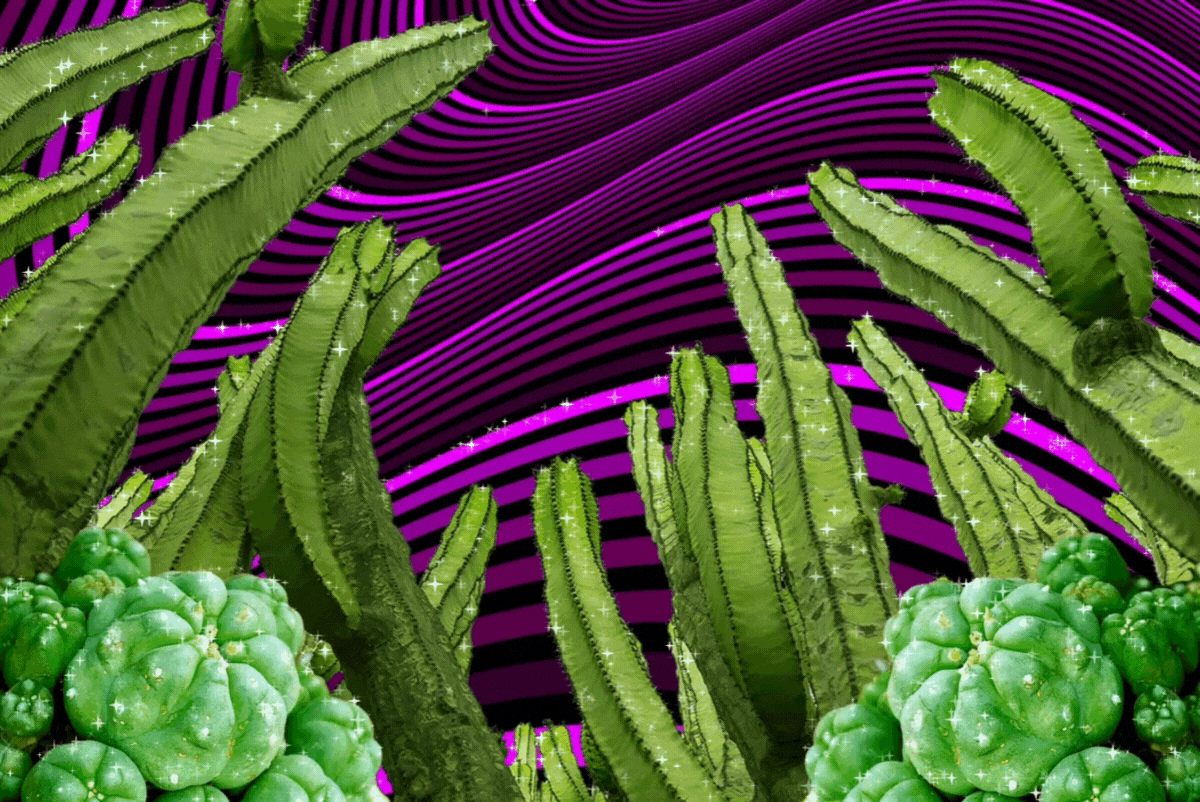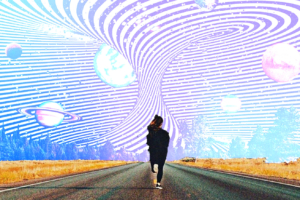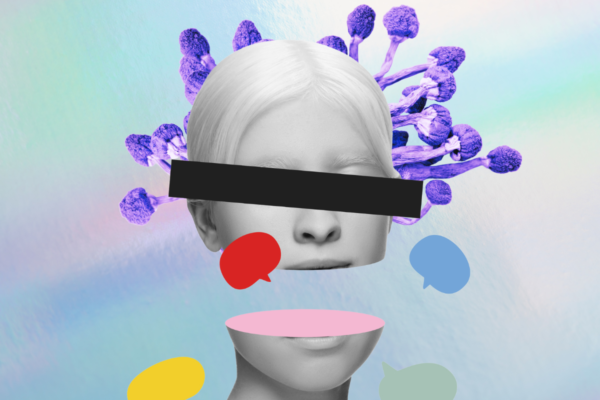
Throughout history, humans have nurtured a tendency to fixate on the panacea–a single solution that can fix diverse problems or illnesses. The recent psychedelic renaissance is frequently framed in such terms, with substances such as psilocybin, MDMA, or ayahuasca lauded as a means of treating various mental illnesses, healing relationship troubles, or even boosting creative juices. Although increasing research suggests psychedelics can offer transformative therapeutic benefits for several conditions, it’s critical to acknowledge that they there are often adverse effects in psychedelic clinical trials. Nonetheless, our enthusiasm for these potent compounds can make it easy to gloss over the less pleasant, or even dangerous, side effects that can arise as a result of use.
A systematic review and meta-analysis released in August 2022 set out to find out more about the short-term and longer-term adverse events associated with psychedelics and how they are reported. The research reviewed 44 articles that described the treatments of 598 unique patients who had received psilocybin, LSD, ayahuasca, or MDMA. The study revealed some fascinating findings —such as the fact that adverse events associated with psychedelic use are often poorly defined and underreported by researchers. We spoke with one of the study’s lead authors, Joost Breeksema, executive director of the OPEN Foundation and organizer of The Interdisciplinary Conference on Psychedelic Research 2022 to learn more.
Adverse events associated with psychedelic use
Psychedelic substances can transport the user on mind-altering, life-changing journeys that shake up perceptions of self, others, and the surrounding world. However, like all journeys, the psychedelic trip can also include uncomfortable or unpleasant elements. Breeksema and his co-authors reviewed how these adverse events (AEs) are defined and assessed in studies using psilocybin, LSD, ayahuasca and MDMA. Adverse events were separated into two categories–acute (those that co-occur with substance use) and late (those that occur in the days and weeks following the experience).
According to their findings, the most common acute adverse events in the MDMA group were fatigue, lack of appetite, feeling cold, thirst, jaw clenching, perspiration, anxiety, and difficulty concentrating. Psilocybin and LSD were associated with acute AEs such as paranoid thoughts, feeling trapped, hallucinations, feeling abnormal, anxiety, headaches, nausea and psychological discomfort. Ayahuasca studies reported nausea and vomiting as common acute AEs. Across the board, multiple studies mentioned that participants sometimes underwent terrifying or confusing experiences. However, with the exception of one MDMA patient who experienced premature ventricular contractions, none of the 598 individuals required medical intervention.
Breeksema and his fellow researchers also explored the presence of late adverse events.
“Sometimes psychedelic sessions can set in motion processes which may not become immediately apparent after the sessions, but which can emerge later on, and which can lead to a period of worsened mood, dark thoughts or memories that come to the surface, existential dread, metaphysical doubt—you name it,” commented Breeksema.
For example, participants in MDMA studies reported fatigue, headaches, anxiety, difficulty concentrating and low mood in the days and weeks their session, with a minority experiencing depression, panic, or suicidal ideation. However, some of the studies reviewed didn’t document low mood in the days after the dose, despite the well-known fact that recreational ecstasy users often experience a “downer” after a session. Breeksema and the research team point out that low mood in the days following MDMA use needs to be accurately assessed with an effort to determine how long the effects last.
Similarly, ayahuasca was also linked to late adverse events. One study reported that four “delicate” patients were hospitalized for a week, without providing details of their condition or how it related to their ayahuasca journey. Psilocybin was also associated with some severe reactions several weeks after administration, including traumatic flashbacks, a severe exacerbation in anxiety, drug use relapse, and a dive in depression. The condition of these patients deteriorated, with all requiring further therapeutic intervention. Despite the clinical significance of these events, none were reported as serious adverse events (SAEs), with the authors of the studies noting that they may have occurred due to the medical and psychiatric complexity of the group. Breeksema and the review’s co-authors emphasize the importance of properly reporting adverse reactions and the need for longer follow-up periods —particularly among vulnerable patients with treatment-resistant mental disorders.
When does a bad trip become a good trip?
The framing of certain adverse events in a reductionist way can fail to capture the nuance of the psychedelic experience. As the review highlights, psychologically or emotionally challenging adverse events can also be therapeutically beneficial. Working through the confronting or traumatic feelings and emotions that arise during a trip can lead to personal, moral, or spiritual breakthroughs. There’s also an increasing acceptance among users and clinicians that difficult experiences may feel distressing at the time, but ultimately yield transformative outcomes in the long run. A 2016 survey, for example, found that 39% of respondents rated their ‘worst bad trip’ as one of the five most challenging experiences of their lifetime —yet the degree of difficulty they experienced was positively associated with lasting increases in well-being.
In this respect, interpreting “anxiety” as an adverse event may prompt patients to try and avoid complex feelings and thoughts rather than engage with them as part of the healing process. The review emphasizes that there’s a need to disentangle adverse elements that ideally should not be part of the therapeutic process —such as headaches, suicidal thoughts, or dissociation— from experiences that may be challenging but ultimately fruitful. Even nausea and vomiting during ayahuasca journeys are open to interpretation. Traditional indigenous and neoshamanic ayahuasca practices, for example, view purging as therapeutic. The ambiguity surrounding the definition of “adverse events” in psychedelic settings can affect how these events are reported–a phenomenon that will be explored more below.
Why are adverse events underreported?
The underreporting of adverse events is not necessarily unique to psychedelic research.
“This is partly a general problem in health care research, where often fewer AEs are reported in official publications than appear in the unpublished data,” explains Breeksema. “To make matters more complicated, in some cases, it’s up to the researchers to determine whether an AE was related to the intervention or not.”
However, evaluating adverse events associated with psychedelics does bring its own unique set of challenges.
“There is a lack of consistency in what exactly constitutes an adverse effect, as something that is detrimental to a patient’s health and thus needs to be avoided, rather than something that may be difficult but can be worked through and can actually contribute to a healing process and can be a positive influence on someone’s health,” comments Breeksema. “Much of this knowledge does reside with experienced therapists working with psychedelics, but a lot of this is tacit and not broadly understood by the research community at large.”
Breeksema also points out that there may be a tendency among pioneering psychedelic researchers and clinicians to shrug off discomforts and emphasize the promise of these interventions for desperate patients.
“Until recently psychedelics were pretty stigmatized ,and the current wave of research is re-exploring clinical applications that seemed pretty solid back in the sixties before they were banned and research ground to a halt,” said Breeksema. “It’s possible that, in order to pre-empt any criticisms, researchers may inadvertently be more inclined to give the psychedelic intervention the benefit of the doubt.” For example, Breeksema points out the review, which included several studies that reported no adverse events.
“I found it very hard to believe that patients really had no negative reactions at all,” he said. “My suggestion would be to explore and publish every negative occurrence as transparently as possible. Right now, all patient groups in clinical studies are thoroughly screened and highly selected; we need to know what happens in this group —which in a sense, is optimally prepared— before we start administering these treatments to much more varied and complex patients in the real world.”
According to this perspective, researchers need to report events such as a relapse in drug use, or a worsening of mood that occurs two months after a psychedelic session, rather than assuming they are completely unrelated.
Lowering the likelihood of adverse events
Ultimately, the review found that MDMA and psychedelics appear to be well-tolerated in treating diverse disorders. However, the authors emphasize caution, as this conclusion is based on fairly small studies that were of varying qualities, administered different doses, and used inconsistent adverse event assessment procedures.
Breeksema also believes there are ways to reduce the likelihood of adverse events —first and foremost, by acknowledging the importance of set and setting.
“Set and setting are sacrosanct for a reason,” explained Breeksema. “Thorough preparation, education beforehand and having trusted, experienced guides during the session, as well as (professional) support afterwards —potentially for a long period— are crucial. Having access to an understanding professional who understands your issues, and who can help you make sense of experiences, some of which may be emotionally deep, profound or strange, or unsettling, is invaluable in my mind.”
Breeksema also points out the need for investment in long-term care and therapy for patients who have undergone psychedelic treatments.
“Scoring well on a depression, PTSD, or alcohol use disorder outcome measure one week, two weeks, three months after your therapy session is great, but what happens afterwards? How do we take care of patients in the long run, keep them whole when they fall apart or relapse again?”





